Fast Algorithm and Architecture Design for MPEG-4
Shape Coding
Introduction
MPEG-4 is a new international standard for multimedia communication. It provides a set of tools for object-based coding of natural and synthetic videos/audios. MPEG-4 also enables content-based functionalities by introducing the concept of video object plane (VOP), and such a content-based representation is a key to enable interactivity with objects for a variety of multimedia applications. The VOP is composed of texture components (YUV) and an alpha component, which is shown in Fig. 1. The texture component contains the colorific information of video object, and the alpha component contains information to identify the pixels, which are inside an object (opaque) and the pixels, which are outside the object (transparent). MPEG-4 supports a content-based representation by allowing the coding of the alpha component along with the objects�� texture and motion information. Therefore, MPEG-4 shape coding becomes the key technology for supporting the content-based video coding.

Fig. 1 The concept of object based video coding
Feture
n Shape encoder takes 20% of total computational complexity of MPEG-4
encoder
n Binary motion estimation (BME) takes nearly 90% of total
computational complexity of shape encoder
Result

Fig. 2 Performance comparisons of SAD and WSAD using full search algorithm for the test bream sequence.

Fig. 3 Performance comparisons of SAD and WSAD using full search algorithm for the test news sequence.

Fig. 4 Performance comparisons of SAD and WSAD using full search algorithm for the test foreman sequence.
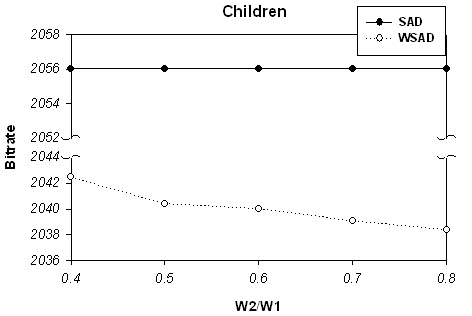
Fig. 5 Performance comparisons of SAD and WSAD using full search algorithm for the test children sequence.
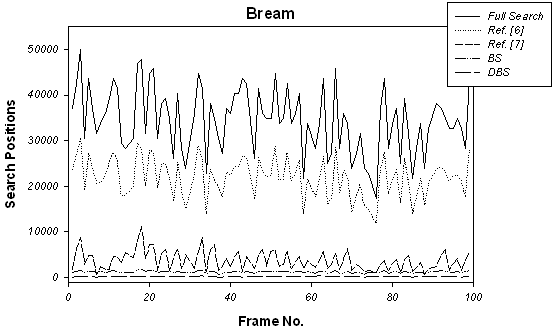
Fig. 6 Performance comparisons of various search algorithms for the test bream sequence.

Fig. 7 Performance comparisons of various search algorithms for the test news sequence.
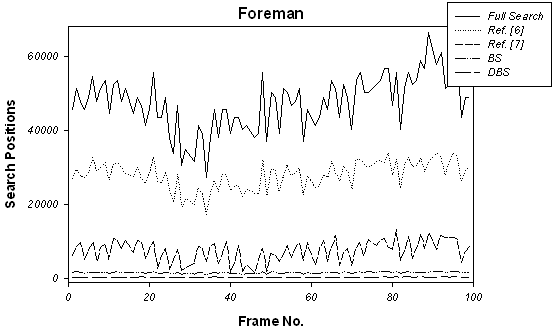
Fig. 8 Performance comparisons of various search algorithms for the test foreman sequence.
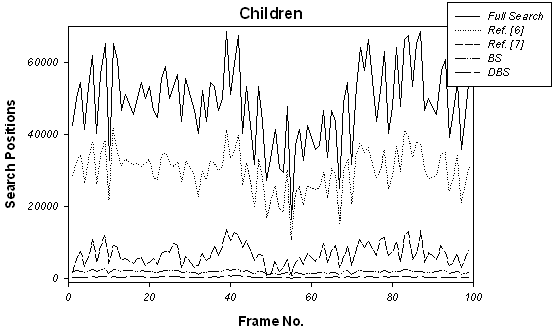
Fig. 9 Performance comparisons of various search algorithms for the test children sequence.
Table I Total search positions for various search algorithms.
|
Sequence |
Full Search |
Ref. [6] |
Ref. [7] |
Proposed (BS) |
Proposed (DBS) |
||||
|
SP |
SP |
% |
SP |
% |
SP |
% |
SP |
% |
|
|
Bream |
10533897 |
6506028 |
61.76 |
1593173 |
15.12 |
368172 |
3.50 |
67164 |
0.64 |
|
News |
791703 |
431816 |
54.54 |
7697 |
0.97 |
27143 |
3.43 |
2281 |
0.29 |
|
Foreman |
9100773 |
5096208 |
56.00 |
1573951 |
17.29 |
287818 |
3.16 |
57311 |
0.63 |
|
Children |
13323915 |
8452318 |
63.43 |
1806706 |
13.56 |
534021 |
4.01 |
112484 |
0.84 |
Table II Average bit-rate for various search algorithms.
|
Sequence |
Full Search |
Ref. [6] |
Ref. [7] |
Proposed (BS) |
Proposed (DBS) |
||||
|
Bits/VOP |
Bits/VOP |
% |
Bits/VOP |
% |
Bits/VOP |
% |
Bits/VOP |
% |
|
|
Bream |
1599.80 |
1599.78 |
100.00 |
1616.96 |
101.07 |
1591.84 |
99.50 |
1600.41 |
100.04 |
|
News |
890.22 |
890.22 |
100.00 |
880.41 |
98.90 |
892.20 |
100.22 |
891.55 |
100.15 |
|
Foreman |
1186.94 |
1186.97 |
100.00 |
1187.61 |
100.06 |
1180.05 |
99.42 |
356279 |
100.06 |
|
Children |
2056.03 |
2056.01 |
100.00 |
2062.81 |
100.33 |
2074.69 |
100.91 |
2077.41 |
101.04 |
Table III Runtime simulation results of various search algorithms.
|
Sequence |
Full Search |
Ref. [6] |
Ref. [7] |
Proposed (BS) |
Proposed (DBS) |
||||
|
ms |
ms |
% |
ms |
% |
ms |
% |
ms |
% |
|
|
Bream |
16606.09 |
21330.50 |
128.45 |
1479.46 |
8.91 |
2318.21 |
13.96 |
362.15 |
2.18 |
|
News |
1579.97 |
1878.64 |
118.90 |
21.45 |
1.36 |
239.42 |
15.15 |
10.85 |
0.69 |
|
Foreman |
20349.37 |
25637.73 |
125.99 |
3226.78 |
15.86 |
2792.07 |
13.72 |
615.20 |
3.02 |
|
Children |
21572.47 |
28251.50 |
130.96 |
3196.80 |
14.82 |
3283.70 |
15.22 |
925.99 |
4.29 |

Fig. 10 Chip layout of MPEG-4 shape encoder.
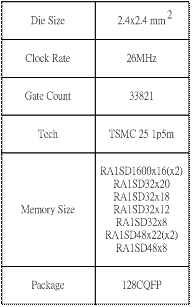
Table IV Chip Features
Made by ��t�k